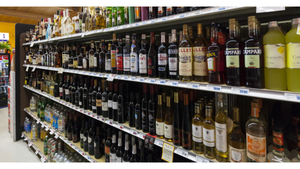EXPOSING SHRINK
SCOTTSDALE, ARIZ. -- The food retail industry has embraced the importance of battling shrink, and now it's time to take the fight to the next level.That's the outlook of Larry Miller, president of Trax Software and Consulting, based here, a 10-year-old company that specializes in loss prevention and other store operations.Miller sees numerous near-term opportunities for retailers to improve on their
December 4, 2000
DAVID ORGEL
SCOTTSDALE, ARIZ. -- The food retail industry has embraced the importance of battling shrink, and now it's time to take the fight to the next level.
That's the outlook of Larry Miller, president of Trax Software and Consulting, based here, a 10-year-old company that specializes in loss prevention and other store operations.
Miller sees numerous near-term opportunities for retailers to improve on their records in tackling employee and customer theft and other forms of shrink. Some of the biggest gains will come from more completely analyzing store data, balancing technology with educational programs and enhancing industry partnerships, he said.
Trax's early efforts focused on reducing cashier shrink, and its activities have grown into an integrated store operations program that also targets shrink related to direct-store deliveries and meat department production, among other areas, and improves results from CCTV systems.
Miller, who has 31 years of experience working on both the retail and supplier sides of the supermarket industry, stressed the importance of using data in a way that enables a holistic view of store operations. That is the focus of Trax's "Smart Store" program. "It combines data from POS, DSD, scales, CCTV and soon labor scheduling into one data repository which is analyzed in a synchronized fashion. That allows us to relate POS activity to DSD, scales and other areas." Results are relayed in "plain-English" reports, e-mails and -- starting in January -- wireless alerts.
"Data warehousing tends to be linear," he explained. "For example, companies analyze the point of sale. But you must establish a relationship to what is produced or else this is intellectually incomplete.
"It allows a synchronization of production and sales," he said. "For example, you would have an urgent wireless alert to a manager that he'll be out of sirloin steak in 30 minutes: 'Produce more before 2 p.m. or you'll be out of steak."'
Such an alert would base its conclusion on analysis of data from the point of sale and the meat department scale systems.
Miller's approach provides a store operations decision-support system that attempts to compensate for the falloff in the ranks of experienced store-level associates. "There's a shrinking professional labor force, and many store employees are not completely trained and schooled," he said. "It's a pressing problem. Years ago you had people who wanted to be store managers. It's not the same anymore. Technology can help level the playing field for management at a higher level."
Despite the many ways in which retailers can attack loss, there are some forms of shrink that should get top priority, he said. "Employee theft and shoplifting together comprise 75% to 80% of all shrink," Miller explained.
Results from the 2000 Supermarket Shrink Survey, produced by the National Supermarket Research Group, underline these trends. Miller is director of the group, also based in Scottsdale, and Trax is one of the sponsors of this study.
According to the study, employee theft continues to be the top cause of shrink for the 11th year in a row, accounting for 55% of the total. The largest component of employee theft was cashier dishonesty, which represented 28% of overall shrink.
The survey found that companies showing markedly less employee theft had enacted three primary shrink-control methods: formal automated cashier monitoring systems, internal audit departments and programs, and formal loss prevention training for employees.
In addition to employee theft, other components of shrink included shoplifting (22%), back-door receiving errors and dishonesty (10%), accounting-department errors (3%), damaged goods (6%) and retail pricing (4%).
Tackling shrink doesn't have to be a complicated affair, Miller stressed. For instance, he said the best way to battle shoplifting -- the second-biggest cause of shrink -- is education. "The front-line attack is an informed and trained employee base," Miller said. "One example is high-profile customer service programs. Shoplifters don't want to get caught. If associates show eye contact, verbal communications and physical proximity, then you can curtail shoplifting. Add to that CCTV cameras and electronic article surveillance and it really helps. But a proactive customer service with trained employees is the key. Create an environment in which shoplifters don't want to come."
Perhaps the most sobering impact of shrink is the financial cost. The survey found that shrink costs the average store 2.28% of sales. "Assuming an average net profit of 1.10% and a shrink rate of 2.28%, for every $1.10 a company makes in net profit that same company has already lost $2.28 to 'unknown shrink,"' the survey said. The result is that "every dollar of shrink that is saved results in a 100% contribution to the bottom-line profit."
Fortunately, companies are recognizing the message relayed by those numbers, Miller said. "Today reduction of shrink is a top-five corporate priority in the best companies. I've seen the increased commitment to shrink reduction from the top executives, including the CEOs. Eight out of 10 times the top executives attend our overview meetings. They understand the rewards."
Although total shrink dipped to 2.28% of retail sales in 1999 from 2.48% the prior year, the data shows a gradual increase in the numbers since 1995, when shrink was 2.09%. But that phenomenon may result partly from improved reporting, Miller said. Companies are "peeling back the onion to expose shrink. They are unmasking it to measure shrink more accurately. So you must first expose all the shrink in order to measure it. Otherwise you are underestimating it."
One big problem area is perishables. The survey found that 55% of store shrink originates from the perishables departments of meat, produce, deli and bakery. These departments represent 29.6% of store sales.
"Perishables shrink is caused by over-production, over-ordering and mishandling," Miller said. "Produce shrinks and loses weight when it sits in a cooler. Meat goes through purge in a cooler in which it loses fluid."
Miller noted that the industry has progressed little on the perishables shrink-reduction front. "Many focus on grocery shrink reduction because grocery is more than 50% of sales. But the goal should be that perishables do not perish, and that you sell what you produce. You need correct production planning and proper allocation of product to what's needed to accommodate sales."
The survey stressed the need for a balanced approach to tackling shrink. "Most positive results occurred in companies that combine the use of technology with employee training and awareness programs to prevent and control shrink. Overall, loss prevention programs must include a balance of policies and practices combined with the efficient use of technology."
Miller emphasized that message by declaring that "technology isn't enough. Behavior modification of people is needed for success. You need smart managers and shrink-sensitive cashiers," he said.
And there's no more important place to start than employee theft, which tops the loss prevention charts as the biggest problem both in good and bad economies, Miller stressed. "You must teach employees to be shrink-sensitive and behavior modification advocates," he said. "You must make everyone a shrink-reduction agent."
Trax assesses the training needs of retail organizations at the beginning of a working relationship. Trax uses customer profitability coaches and education and training workshops to help accomplish an overall culture change.
"Technology isn't just about automation," Miller said. "It's a linking together to join something. So you need both technology and humans to succeed."
Success in developing new tools to fight shrink can be enhanced through partnering of technology and equipment vendors and retailers to provide "a whole new level of intelligent systems," Miller said.
Trax relies on partner data for the data mining that enables it to help retailers recognize unproductive store-level patterns that cause shrink. But more availability of data and a bigger commitment to industry partnering are needed to bring the war against loss to the next stage, Miller said. He stressed the need for partnerships that would involve key players in the world of loss prevention, such as technology providers, system integrators and camera systems companies.
"We want to actively partner with vendor companies and we're trying to make our technology available to them," Miller said. "For instance, if you want to get a database extract from a scale, you need the cooperation of a technology provider. So we would like to partner with retailers and other technology companies, as well as financial/investment companies."
Among the key advantages of such collaborations would be cooperative design specification, system integration, architectural streamlining, joint industry initiatives and joint presentations to retail groups, Miller said.
"We can bring the store operations knowledge, but we need the data from partners and the ability to work with other systems," Miller said. "Each partner would bring its own wealth of knowledge to the table. The result is that we'd be serving the retail community by creating truly superior products."
About the Author
You May Also Like




